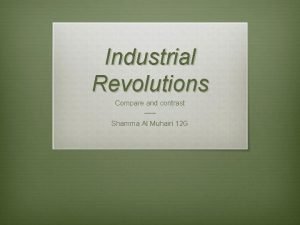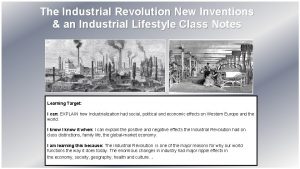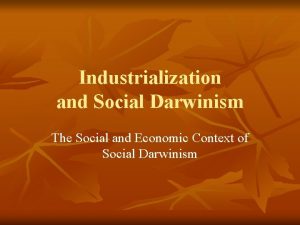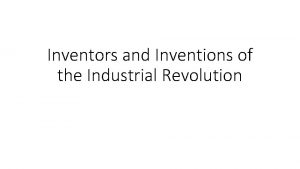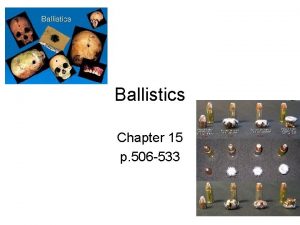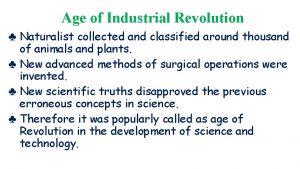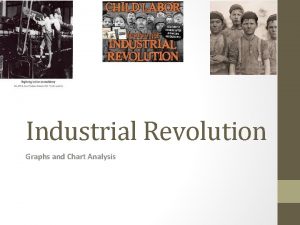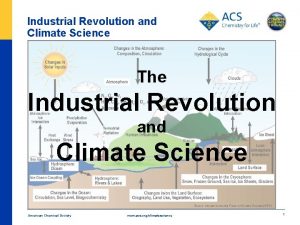Age of Industrial Revolution Naturalist collected and classified











- Slides: 11

Age of Industrial Revolution ♣ Naturalist collected and classified around thousand of animals and plants. ♣ New advanced methods of surgical operations were invented. ♣ New scientific truths disapproved the previous erroneous concepts in science. ♣ Therefore it was popularly called as age of Revolution in the development of science and technology.

Why did the Industrial Revolution being in England? Ø Availability of natural resources such as coal, iron and developed farmlands. Ø steam engine and textile machines Ø population growth Ø from cottage system to factory system

James Watt's Steam Engine Ø Scottish Inventor and Mechanical engineer Ø it was called the Watt Steam Engine in 1775 Ø the Watt Steam Engine was not the first steam engine. Ø in 1679 Thomas Savery was the first person who invented the Steam engine for work in mines. Ø in 1712 Thomas Newcomen (1663 -1729) invented the first steam engine.

Ø It widely used to pump water out of coal mines. Ø he improved upon Newcomen Steam engine by using condenser, therefore it was known as the improved design of Newcomen engine.

James Watt’s Steam Engine

Textile Industry » The word ‘calico’ is derived from ‘Calicut’ a weaving centre on west coast of India. » ‘Calico’ the general term was used for all cotton cloths of all kinds import from the east. » Calico introduced in England by EEIC. » Lancashire in England famous centre of textiles » In Latin ‘textile’ means a ‘woven fabric’ » 18 th Century had tremendous progress in textile industry

» Outbreak of Industrial Revolution in England brought a radical change in the spinning and weaving technology. » Man-made textiles were replaced by machine-made products » Discovery of new trade and sea routes which promoted trade and commerce.

John Kay’s Flying Shuttle (1733) Ø In 1733 John Kays (1704 -64) invented flying shuttle. ØIt was the first great invention for increasing the productions of textiles. ØJohn Kays basically clock maker. ØIt used for quick weaving to be produce faster and large quantity.

James Hargreave’s (1702 -1778) Spinning Jenny (1764) Ø he named after the berth of his daughter Jenny. Ø it used 8 spindles instead of 1. A single wheel on the spinning jenny controlled 8 spindles which create 8 threads. Ø later on, models had up to 120 spindles

Edmund Cartwright Power Loom (1785 ) Ø For weaving as well as spinning.

Eli Whitney's Cotton Gin (1793) v Eli Whitney's Cotton Gin invented in 1793. v it separated cotton from seeds v it removed the seeds from the cotton quickly and efficiently.
 Iron age bronze age stone age timeline
Iron age bronze age stone age timeline Iron age bronze age stone age timeline
Iron age bronze age stone age timeline Possessive adjectives
Possessive adjectives First and second industrial revolution
First and second industrial revolution Industrial lifestyle
Industrial lifestyle Charles dickens view on the industrial revolution
Charles dickens view on the industrial revolution Industrial revolution social darwinism
Industrial revolution social darwinism Bessemer process
Bessemer process Scientists recently discovered that rocks collected
Scientists recently discovered that rocks collected How are ballistics collected
How are ballistics collected Ualitative data
Ualitative data Advantages of scanning in reading
Advantages of scanning in reading



